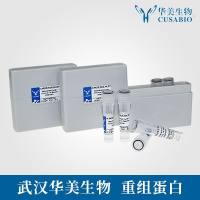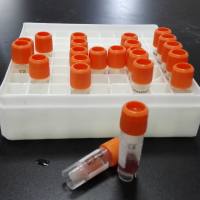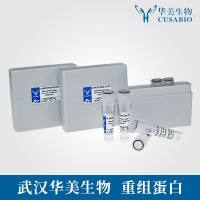Inducing and Characterizing Liver Regeneration in Mice: Reliable Models, Essential “Readouts” and Critical Perspectives
互联网
- Abstract
- Table of Contents
- Materials
- Figures
- Literature Cited
Abstract
Elucidating the molecular circuitry that regulates regenerative responses in mammals has recently attracted considerable attention because of its emerging impact on modern bioengineering, tissue replacement technologies, and organ transplantation. The liver is one of the few organs of the adult body that exhibits a prominent regenerative capacity in response to toxic injury, viral infection, or surgical resection. Over the years, mechanistic insights into the liver's regenerative potential have been provided by rodent models of chemical liver injury or surgical resection that faithfully recapitulate hallmarks of human pathophysiology and trigger robust hepatocyte proliferation leading to organ restoration. The advent of mouse transgenics has undeniably catalyzed the wider application of such models for researching liver pathobiology. This article provides a comprehensive overview of the most reliable and widely applied murine models of liver regeneration and also discusses helpful hints, considerations, and limitations related to the use of these models in liver regeneration studies. Curr. Protoc. Mouse Biol . 3:141?170 © 2013 by John Wiley & Sons, Inc.
Keywords: liver; partial hepatectomy; hepatotoxicity; carbon tetrachloride; hepatocytes; proliferation; regeneration
Table of Contents
- Liver Regeneration: Overview
- Basic Protocol 1: Inducing Liver Regeneration in Mice: The 2/3 Partial Hepatectomy Model (Suture Ligation Technique)
- Basic Protocol 2: The CCl4‐Induced Acute Liver Injury and Regeneration Model
- Support Protocol 1: Harvesting Mouse Organs and Blood
- Support Protocol 2: Quantifying Hepatocyte Cell Cycle Re‐Entry by Means of BrdU Immunohistochemistry
- Support Protocol 3: Preparation of Nuclear Protein Extracts from Mouse Liver
- Support Protocol 4: Probing the Activation of Transcriptional Networks that Promote Liver Regeneration (Electrophoretic Mobility Shift Assay)
- Reagents and Solutions
- Commentary
- Figures
- Tables
Materials
Basic Protocol 1: Inducing Liver Regeneration in Mice: The 2/3 Partial Hepatectomy Model (Suture Ligation Technique)
Materials
Basic Protocol 2: The CCl4‐Induced Acute Liver Injury and Regeneration Model
Materials
Support Protocol 1: Harvesting Mouse Organs and Blood
Materials
Support Protocol 2: Quantifying Hepatocyte Cell Cycle Re‐Entry by Means of BrdU Immunohistochemistry
Materials
Support Protocol 3: Preparation of Nuclear Protein Extracts from Mouse Liver
Materials
Support Protocol 4: Probing the Activation of Transcriptional Networks that Promote Liver Regeneration (Electrophoretic Mobility Shift Assay)
Materials
|
Figures
-
Figure 1. Schematic diagram of the anatomy of the mouse liver. This diagram illustrates the basic anatomical features of the mouse liver, including its distinct lobular architecture and intrahepatic circulation, and the positioning of the ligatures (brown dashed lines) used in the partial hepatectomy technique. TF, transcription factor. View Image -
Figure 2. Stages of the partial hepatectomy procedure. (A ) Iodine treatment and the dashed line delineate the area shaved in preparation for the surgery. (B ) Forceps are used to pull up on the muscle layer, clearly showing the linea alba (yellow arrow) for the incision. (C ) The left lateral lobe (LLL) and two segments of the median lobe [right (RML) and left (LML)] to be resected are outlined. The gallbladder, which is also removed, is indicated by the yellow arrow. (D , E ) A distant (D) and close‐up (E) view of the top membrane (yellow arrow) to be cut. The gallbladder is also clearly visible. (F , G ). A distant (F) and close‐up (G) view of the second membrane (yellow arrows indicate the approximate start and end) to be cut is shown. Also delineated are the right lateral (RLL) and caudate (CL) lobes (each of which consists of two or three segments, not delineated) that will be left intact after the surgery, and which are visible when the median lobe (ML) and LLL are lifted. (H ) Posterior view showing placement of the first suture at the base of the LLL. (I ) Anterior view of the suture wrapped around the stem of the LLL. (J ) View of the LLL after tightening the knot of the suture in (I). Note the darker color of the now ischemic LLL (yellow asterisk) after blood flow has been restricted. (K ) Posterior view showing placement of the second suture at the base of the ML. (L ) Anterior view of the suture wrapped around the stem of the ML. Note that in this case the suture is not placed at the very base of the stem, but tied somewhat forward of it, pinching in some of the surrounding tissue. (M ) View of the ischemic ML after tightening the knot of the suture in (L). (N ) A small remnant piece of tissue remains after resecting the ML. (O ) View of the remnant tissue after resecting both the ML and LLL, with the remaining RLL and CL clearly visible. Note that the source of the pooled blood in (N) and (O) is the resected lobes, and not bleeding from the remnant tissue. This blood should be cleaned out by the saline/PBS wash in step 25 of the protocol. (P ) Close‐up view of the initial sutures for the muscle layer, showing the beginning knot and first continuous suture. Note the lack of blood around the incision due to a proper cut along the linea alba. (Q ) Distant view of the muscle layer after it has been closed by continuous sutures. (R ) Distant view of the skin after it has been closed by continuous sutures. View Image
Videos
Literature Cited
| Literature Cited | |
| Bhathal, P.S., Rose, N.R., Mackay, I.R., and Whittingham, S. 1983. Strain differences in mice in carbon tetrachloride‐induced liver injury. Br. J. Exp. Pathol.64:524‐533. | |
| Bucher, N.L. 1963. Regeneration of mammalian liver. Int. Rev. Cytol.15:245‐300. | |
| Cook, M.J. 1965. The Anatomy of the Laboratory Mouse. pp. 87‐95. Academic Press, London & New York. | |
| Cressman, D.E., Greenbaum, L.E., DeAngelis, R.A., Ciliberto, G., Furth, E.E., Poli, V., and Taub, R. 1996. Liver failure and defective hepatocyte regeneration in interleukin‐6‐deficient mice. Science274:1379‐1383. | |
| DeAngelis, R.A., Markiewski, M.M., Taub, R., and Lambris, J.D. 2005. A high‐fat diet impairs liver regeneration in C57BL/6 mice through overexpression of the NF‐kappaB inhibitor, IkappaBalpha. Hepatology42:1148‐1157. | |
| Desbois‐Mouthon, C., Wendum, D., Cadoret, A., Rey, C., Leneuve, P., Blaise, A., Housset, C., Tronche, F., Le, B.Y., and Holzenberger, M. 2006. Hepatocyte proliferation during liver regeneration is impaired in mice with liver‐specific IGF‐1R knockout. FASEB J.20:773‐775. | |
| Doolittle, D.J., Muller, G., and Scribner, H.E. 1987. Relationship between hepatotoxicity and induction of replicative DNA synthesis following single or multiple doses of carbon tetrachloride. J. Toxicol. Environ. Health22:63‐78. | |
| Fausto, N. 2000. Liver regeneration. J. Hepatol.32:19‐31. | |
| Fausto, N., Campbell, J.S., and Riehle, K.J. 2012. Liver regeneration. J. Hepatol.57:692‐694. | |
| Gallagher, S.R. 2012. SDS‐polyacrylamide gel electrophoresis (SDS‐PAGE). Curr. Protoc. Essential Lab. Tech.6:7.3.1‐7.3.28. | |
| Heijboer, A.C., Donga, E., Voshol, P.J., Dang, Z.C., Havekes, L.M., Romijn, J.A., and Corssmit, E.P. 2005. Sixteen hours of fasting differentially affects hepatic and muscle insulin sensitivity in mice. J. Lipid Res.46:582‐588. | |
| Higgins, G.M. and Anderson, R.M. 1931. Experimental pathology of the liver I. Restoration of the liver of the white rat following partial surgical removal. Arch. Pathol.12:186‐202. | |
| Honkakoski, P., Kojo, A., and Lang, M.A. 1992. Regulation of the mouse liver cytochrome P450 2B subfamily by sex hormones and phenobarbital. Biochem. J.285:979‐983. | |
| Jaeschke, H., McGill, M.R., Williams, C.D., and Ramachandran, A. 2011. Current issues with acetaminophen hepatotoxicity: A clinically relevant model to test the efficacy of natural products. Life Sci.88:737‐745. | |
| Johnston, D.E. and Kroening, C. 1998. Mechanism of early carbon tetrachloride toxicity in cultured rat hepatocytes. Pharmacol. Toxicol.83:231‐239. | |
| Kim, Y.C., Yim, H.K., Jung, Y.S., Park, J.H., and Kim, S.Y. 2007. Hepatic injury induces contrasting response in liver and kidney to chemicals that are metabolically activated: Role of male sex hormone. Toxicol. Appl. Pharmacol.223:56‐65. | |
| Kovalovich, K., DeAngelis, R.A., Li, W., Furth, E.E., Ciliberto, G., and Taub, R. 2000. Increased toxin‐induced liver injury and fibrosis in interleukin‐6‐deficient mice. Hepatology31:149‐159. | |
| Martins, P.N., Theruvath, T.P., and Neuhaus, P. 2008. Rodent models of partial hepatectomies. Liver Int.28:3‐11. | |
| Michalopoulos, G.K. 2007. Liver regeneration. J. Cell. Physiol.213:286‐300. | |
| Michalopoulos, G.K. 2010. Liver regeneration after partial hepatectomy: Critical analysis of mechanistic dilemmas. Am. J. Pathol.176:2‐13. | |
| Mitchell, C. and Willenbring, H. 2008. A reproducible and well‐tolerated method for 2/3 partial hepatectomy in mice. Nat. Protoc.3:1167‐1170. | |
| Olle, E.W., Ren, X., McClintock, S.D., Warner, R.L., Deogracias, M.P., Johnson, K.J., and Colletti, L.M. 2006. Matrix metalloproteinase‐9 is an important factor in hepatic regeneration after partial hepatectomy in mice. Hepatology44:540‐549. | |
| Orlando, G., Baptista, P., Birchall, M., De, C.P., Farney, A., Guimaraes‐Souza, N.K., Opara, E., Rogers, J., Seliktar, D., Shapira‐Schweitzer, K., Stratta, R.J., Atala, A., Wood, K.J., and Soker, S. 2011. Regenerative medicine as applied to solid organ transplantation: Current status and future challenges. Transpl. Int.24:223‐232. | |
| Simonian, M.H. and Smith, J.A. 2006. Spectrophotometric and colorimetric determination of protein concentration. Curr. Protoc. Mol. Biol.76:10.1A.1‐10.1A.9. | |
| Strey, C.W., Markiewski, M., Mastellos, D., Tudoran, R., Spruce, L.A., Greenbaum, L.E., and Lambris, J.D. 2003. The proinflammatory mediators C3a and C5a are essential for liver regeneration. J. Exp. Med.198:913‐923. | |
| Taub, R. 2004. Liver regeneration: From myth to mechanism. Nat. Rev. Mol. Cell Biol.5:836‐847. | |
| Tunon, M.J., Alvarez, M., Culebras, J.M., and Gonzalez‐Gallego, J. 2009. An overview of animal models for investigating the pathogenesis and therapeutic strategies in acute hepatic failure. World J. Gastroenterol.15:3086‐3098. | |
| Wustefeld, T., Rakemann, T., Kubicka, S., Manns, M.P., and Trautwein, C. 2000. Hyperstimulation with interleukin 6 inhibits cell cycle progression after hepatectomy in mice. Hepatology32:514‐522. | |
| Yager, J.D., Zurlo, J., Sewall, C.H., Lucier, G.W., and He, H. 1994. Growth stimulation followed by growth inhibition in livers of female rats treated with ethinyl estradiol. Carcinogenesis15:2117‐2123. | |
| Yokoyama, H.O., Wilson, M.E., Tsuboi, K.K., and Stowell, R.E. 1953. Regeneration of mouse liver after partial hepatectomy. Cancer Res.13:80‐85. | |
| Key Reference | |
| Mitchell and Willenbring, 2008. See above. | |
| This article provides an authoritative overview of the 2/3 partial hepatectomy technique and a comprehensive outline of the surgical procedure for inducing liver regeneration in mice. It also discusses critical parameters affecting experimental design, including limitations and potential caveats that should be taken into consideration when designing similar studies. |









